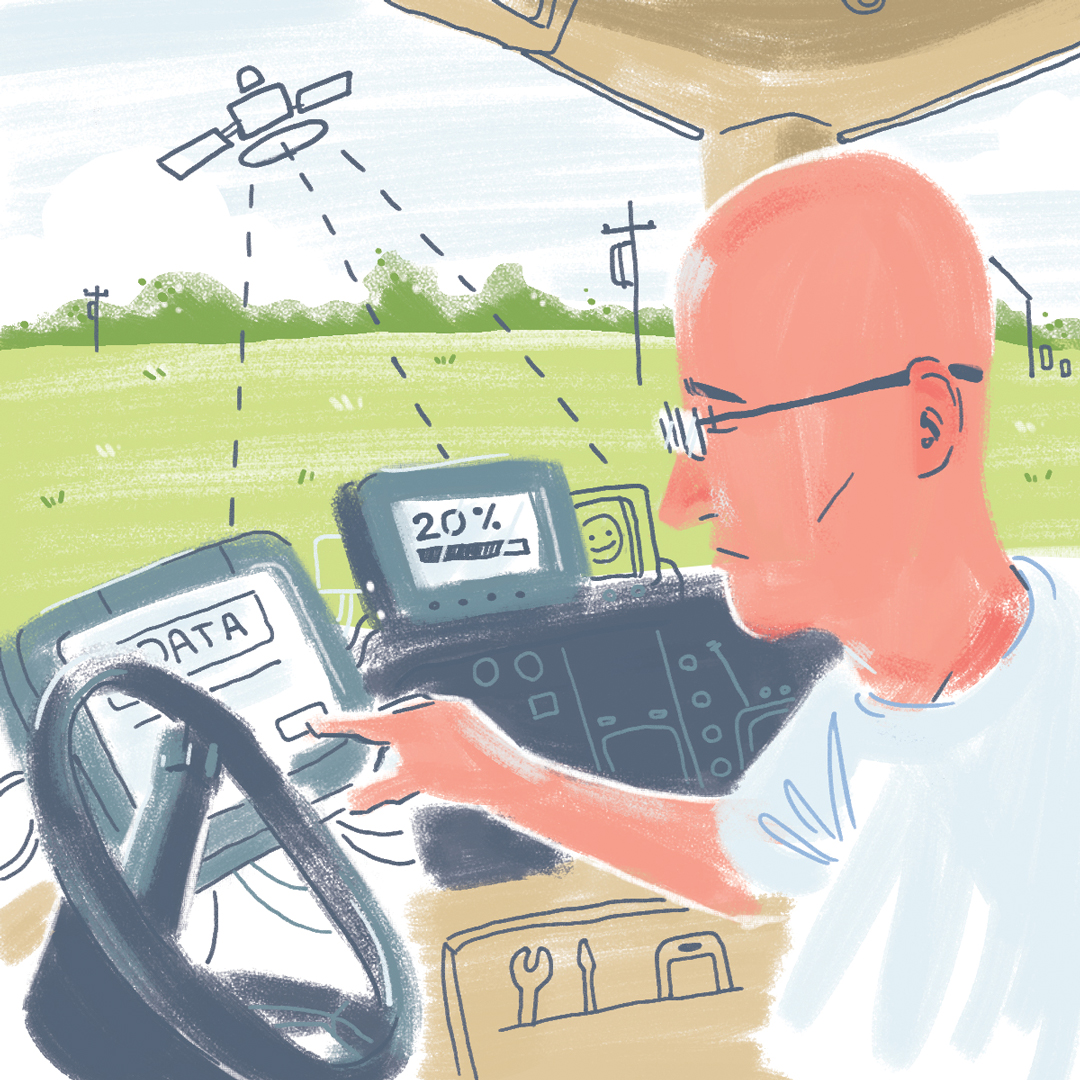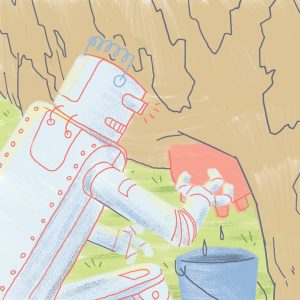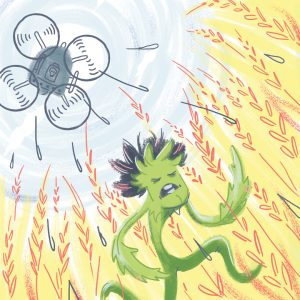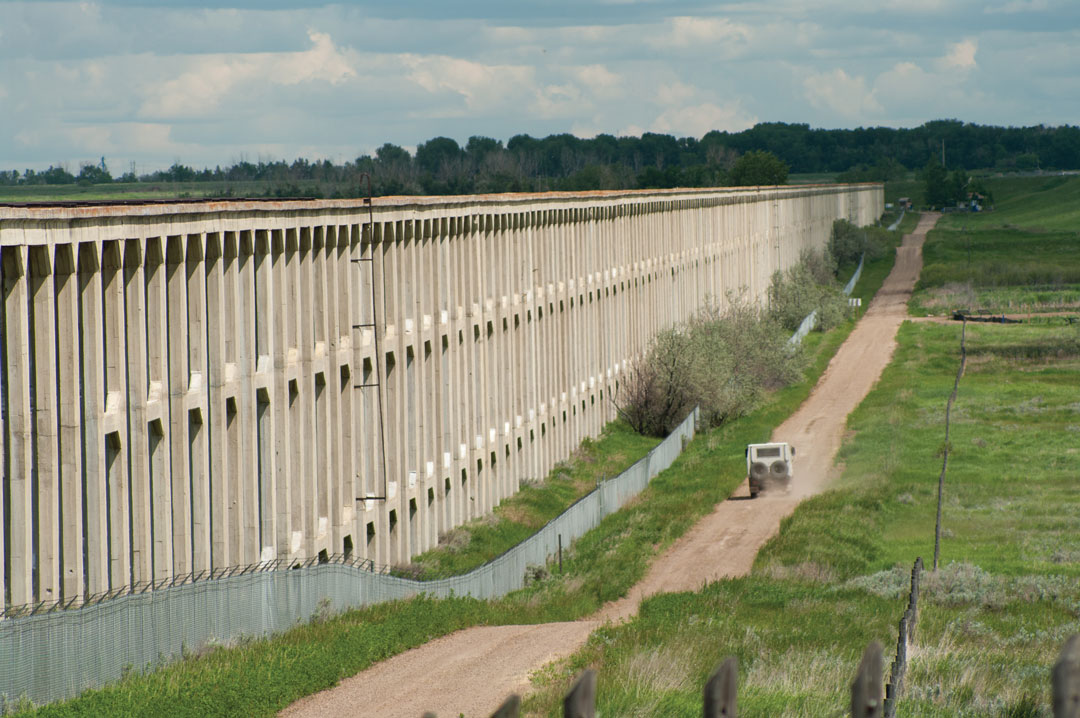OLD JOB, NEW TOOLS
TECHNOLOGY RULES IN AG
BY PETER GREDIG
Farming isn’t rocket science. It’s actually more complicated than that. The high-tech equipment and production practices employed by farmers today raise the bar on efficiency, environmental sustainability and, ultimately, food quality and safety. Reducing costs and improving productivity is a common theme with new technologies. Here is a quick summary of a few of the technologies at play on Canadian farms.
GLOBAL POSITIONING SYSTEMS (GPS)
Grain farmers have been taking advantage of GPS technology for almost 20 years, and it’s been a game changer. Initially, GPS yield monitors on harvesting equipment allowed farmers to know exactly how much crop they harvested from every square metre of their land. Over time, locational yield data has allowed farmers to better manage the variability in their fields.
Recently, GPS technology has expanded to provide precision guidance to farm equipment. Some systems are accurate to within an inch, and the tractors, sprayers and combines literally drive themselves thanks to hydraulic steering components that are connected and directed by incoming GPS signals. This means no overlap or missed spots when seeding, fertilizing or spraying crops—even with equipment that is 60, 80 or more than 100 feet wide. There is still a human sitting in the driver’s seat, but that person’s job is to make sure everything is working properly instead of steering the machine—which means less operator fatigue during long hours in the field. Hands-free guidance technology is rapidly becoming mainstream because it saves time, fuel, fertilizer and other crop-protection products.
VARIABLE RATE TECHNOLOGY
An end result of farmers’ ability to collect GPS-specific yield, soil type and fertility data is the creation of production zones. Instead of applying one rate of fertilizer and seed across an entire field, many farmers are now using variable-rate-enabled equipment to take into account the high-, medium- and low-production zones across each field. An electronic “prescription” is generated and fed into the seeder or fertilizer applicator so that, as the machine goes across the field, the rate applied matches the production zone. Putting more fertilizer or seed in high-production zones and less where the yield potential is lower improves efficiency and reduces over-application.
MOBILE TECHNOLOGY
Smartphones and tablets are a perfect fit for farmers who would much rather be in the field, barn or shop than sitting in their office. Running a farm business involves making a lot of decisions, often on the fly, as weather or markets change. Mobile Internet, email, GPS, real-time video communication, financial management and recordkeeping—all of these capabilities mean better management decisions because so much information is available whenever and wherever the farmer needs it.
There are numerous apps designed specifically for farmers to help them identify and control pests, market their grain, order parts for equipment, determine appropriate fertilizer blends and rates, diagnose and treat livestock disease, move irrigation pivots and much more. Smartphones are becoming the remote control and virtual office for progressive farmers who are constantly on the move.
PLANT AND ANIMAL GENETICS
Plant and livestock trait selection and breeding has been an ongoing process for more than a thousand years, but recent advances in plant genetics have delivered dramatic improvements. These include not only significant yield increases, but also drought tolerance, disease and pest resistance, and lower fertilizer requirements, to name only a few.
Some of these crop traits have been developed using traditional breeding practices. Others are products of biotechnology, or Bt, that involve genetic modification. As a farmer, I know that using biotech seed has reduced the amount of chemicals that my family and I are exposed to. It also means the amount we till is greatly reduced. The end result for me is less pesticide, healthier soil and less soil erosion. Did I mention I can grow more food using the same amount of land and water?
For livestock, most advancements have been the result of traditional breeding by selecting for specific traits, such as leaner meat, faster growth and improved hardiness. The arrival of gene-editing technology represents a potentially powerful new science for plant and livestock genetics.
ROBOTICS
Robotic milking machines are used on many Canadian dairy farms and it’s an amazing thing to see in action. A neck collar carries an electronic tag unique to each cow. The milking robot is also a feeding station so when the cow enters the station looking for a meal, the ID tag transmits the cow’s information and she receives a meal customized to meet her exact nutrient needs. While she is eating, the robot attaches suction units to each teat and the cow is milked without stress or human handling. Time farmers previously spent milking two or three times a day is now spent monitoring and ensuring herd health and comfort.
On the crop side, small robotic tractors are also starting to find their way into fields where they can work 24 hours a day, seven days a week, to remove weeds or perform other tasks.
REDUCED TILLAGE
Traditionally, farmers would plow or till their soil to prepare the land for planting or seeding a crop. This took a lot of time and fuel, and has a negative impact on soil health. Zero- or no-till equipment has changed this by allowing seed to be placed in the soil without tillage of any kind. Crop residue from the previous year is left in place to hold down the soil and prevent wind and water erosion over the winter months. Leaving the residue on the soil surface also encourages healthy activity from soil-borne organisms that feed on the residue and enhance soil health. Long-term, adopting zero-till practices allows farmers to build organic matter and enhance soil productivity, resulting in a lower carbon footprint overall. Zero-till practices also capture carbon dioxide in the soil, thus contributing to a reduction in greenhouse gases.
BIO-MONITORS
It’s like FitBit for animals—bio-monitors are devices that have been developed for horses, pigs and cattle to detect and wirelessly share body temperature, movement, respiration rate, stress levels and more with the farmer. For some species, bio-monitors help the farmer know when the individual animal should be bred. If incoming data is outside of normal ranges, it can be an early warning of a specific disease or health issue for the herd.
DRONES
A UAV (unmanned aircraft vehicle) or drone with a camera can provide a bird’s-eye view of large fields. Most are GPS-enabled, so if there is a problem area detected via the drone’s camera, the farmer can access the GPS co-ordinates to visit the spot and investigate further. Some drones use an infrared camera that can measure plant health and identify stressed areas that are not showing visible symptoms. Thermal detection cameras can help ranchers find individual animals by detecting body heat. And there are drones that have been equipped with a small tank and the ability to spray herbicide on individual weed escapes across a field, eliminating the need for a full field treatment with a big sprayer. We’re still in the early days of drone technology, but farmers will find creative ways to put them to work.










Comments